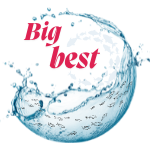
How to Farm Fish the Right Way
Aquaculture is transforming the future of food—especially in regions like East Africa, where demand for quality protein is rising. But success in fish farming isn’t just about scaling up. It’s about doing it right.
At Big Best Company, we believe in raising fish with integrity, care, and sustainability. Whether you’re new to aquaculture or an established farmer, here are 7 best practices that ensure healthy fish, better yields, and a thriving environment.
1. Start with Quality Fingerlings
Healthy fish start with strong genetics. Use certified hatcheries that supply disease-free, fast-growing fingerlings. Regularly monitor for abnormalities and remove weak stock early.
2. Choose the Right Site
Location matters. Look for areas with clean, oxygen-rich water, proper depth and water flow, and minimal pollution. This is crucial for cage farming in lakes like Victoria.
3. Maintain Optimal Stocking Densities
Overcrowding leads to stress, disease, and lower growth rates. Stick to recommended stocking limits and separate fish by size to reduce aggression and competition.
Sustainable aquaculture is not just smart business—it’s our responsibility to the environment and future generations.
Big Best Company
4. Use High-Quality, Nutritious Feed
Feeding accounts for 60–70% of operating costs. Use nutritionally balanced, floating pellets that match the species and growth stage. Avoid overfeeding to minimize waste and water pollution.
5. Monitor Water Quality Regularly
Healthy water = healthy fish. Track key parameters like dissolved oxygen, temperature, pH, and ammonia levels. Monitoring should be done daily, especially during hot seasons.
6. Prevent Disease with Biosecurity
Isolate new stock before introducing them. Sanitize equipment and enforce hygiene protocols among staff. Prevention is always cheaper than treatment.
7. Responsible Harvesting & Cold Chain Management
Harvest fish at the right size and use humane methods to minimize stress. Move harvested fish into cold storage immediately—like Big Best’s cold trucks and chillers—to preserve freshness.
Why It Matters
Sustainable aquaculture protects the ecosystem while keeping your business profitable. Use eco-friendly feeds, reduce waste, and avoid chemicals that harm biodiversity. Investing in good practices pays off—in higher yields, better quality, and loyal customers.
The Big Best Way
At Big Best, we go beyond farming—we lead by example. Our fish are raised naturally in the clean waters of Lake Victoria and delivered fresh across Tanzania, with an unwavering commitment to innovation, sustainability, and community growth.
